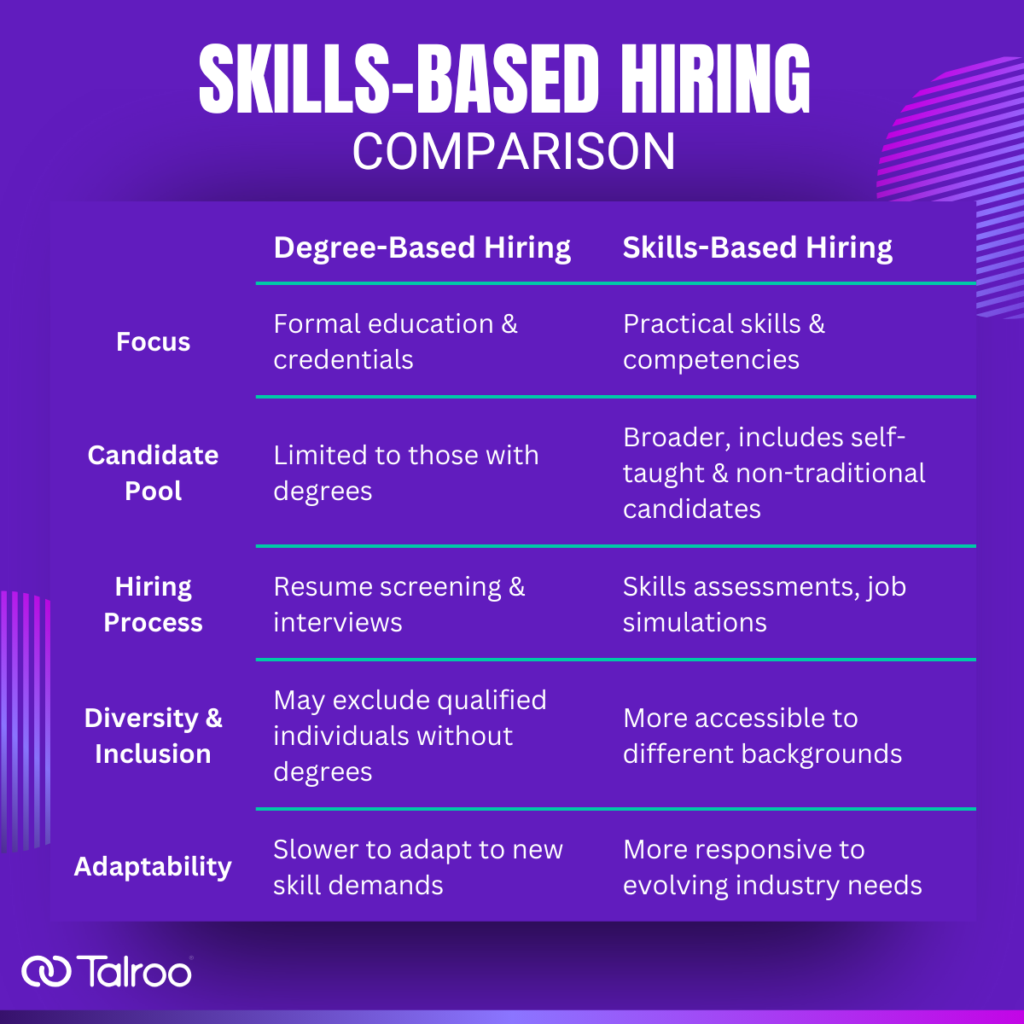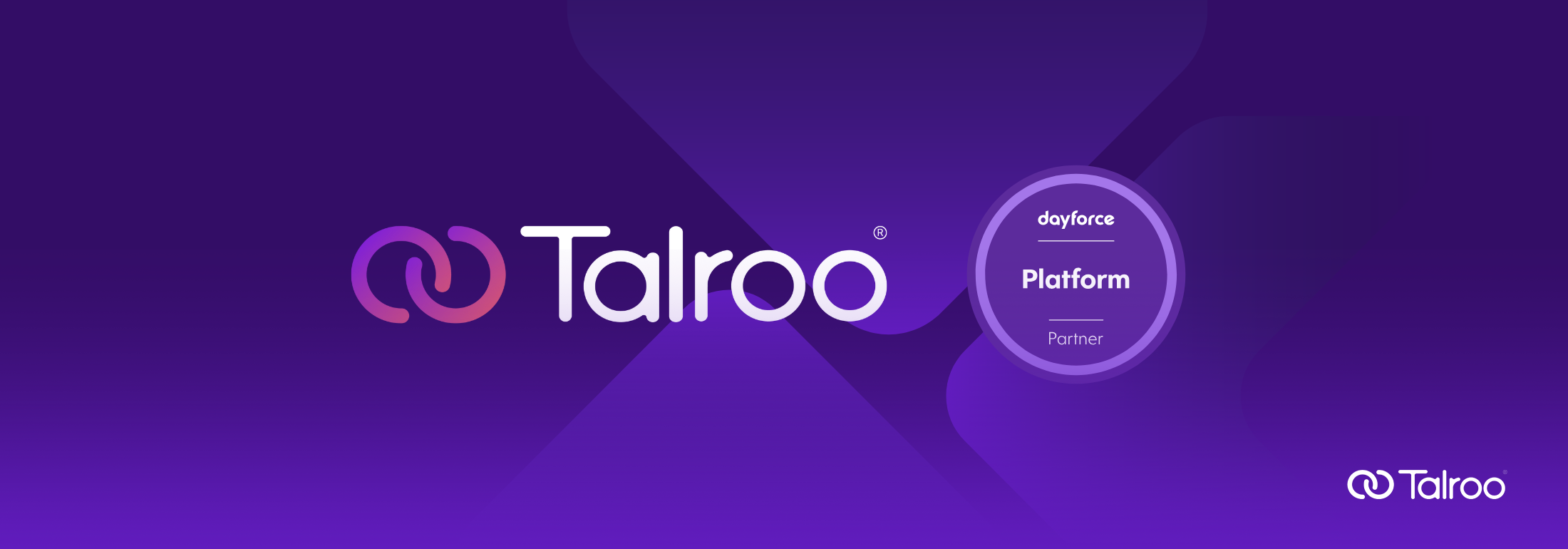
In a rapidly evolving job market, the traditional emphasis on formal degrees is giving way to a more inclusive approach: skills-based hiring. This paradigm shift focuses on an individual’s competencies and practical abilities rather than solely on their educational credentials. By adopting a skills-first recruitment model, organizations can tap into non-traditional talent pools, enhance workplace diversity, future-proof their workforce, and ensure that employees possess the specific skills required for success.
The Rise of Skills-Based Hiring
Several factors have contributed to the growing momentum of skills-based hiring. A study by IBM found that over 120 million workers globally will need retraining due to AI and automation within three years—which only highlights how much skill sets matter now.
- Talent Shortages in Emerging Fields: Industries such as artificial intelligence (AI) and sustainability have experienced rapid growth, leading to a demand for skilled professionals that outpaces the supply of degree-holding candidates. Employers are increasingly prioritizing specific skills over formal education to fill these roles effectively.
- Advancing Technology: Successful organizations evolve with technology, and the advent of AI, globalization, and other advancements requires workers to adapt and advance. While this all feels very new, one can easily look back to the industrial evolution or the evolution of the internet and see how relying on old tools can lead to failure.
- Fractured Resume-Based Ecosystem: The rise of AI-generated resumes has made it challenging to assess candidates based solely on traditional application materials. As a result, employers are turning to alternative assessment methods, such as personality and skills tests, to gain deeper insights into candidates’ capabilities.
- Diversity and Inclusion Efforts: Organizations recognize that strict degree requirements can exclude capable individuals from diverse backgrounds. By focusing on skills, companies can create more equitable hiring practices and foster a more inclusive workforce.
Related: Q&A from Skill-Based Hiring Webinar | Talroo
Benefits of a Skills-First Recruitment Model
Transitioning to a skills-based hiring approach offers several advantages:
- Expanded Talent Pool: By removing unnecessary degree requirements, companies can attract candidates from a wider range of backgrounds, including those who have gained expertise through alternative routes such as bootcamps, apprenticeships, or self-directed learning.
- Adaptable Workforce: Employees who come by their skills via non-traditional methods are more likely to have overcome adversity, self-taught, and adapted to build those skills. Those abilities also help create a more adaptable workforce.
- Enhanced Workplace Diversity: A skills-based approach reduces barriers that often exclude qualified and diverse talent, leading to a more inclusive workforce.
- Improved Employee Performance: Hiring based on specific competencies ensures that employees have the necessary skills to excel in their roles, potentially leading to increased productivity and job satisfaction.
Implementing Skills Assessments in the Hiring Process
To effectively transition to a skills-based hiring model, organizations should integrate skills assessments into their recruitment processes. Here are some steps to consider:
- Define Relevant Skills: Identify the specific skills, expertise, and certifications crucial for success in each role. This includes both technical abilities and soft skills such as communication and problem-solving.
- Select Appropriate Assessment Tools: Choose or develop assessment methods that accurately evaluate the identified skills. This could involve technical tests, situational judgment tests, cognitive ability tests, personality assessments, or job simulation exercises.
- Integrate Assessments into the Recruitment Process: Determine the optimal stage to administer assessments. For roles where hard skills are essential, conducting skills assessments after evaluating soft skills can provide a comprehensive view of a candidate’s fit.
- Ensure Fairness and Objectivity: Implement standardized assessments to minimize biases and ensure that all candidates are evaluated on the same criteria. This promotes a fairer hiring process and supports diversity initiatives.
- Provide Training for Hiring Managers: Equip hiring managers with the necessary training to interpret assessment results accurately and make informed decisions based on data-driven insights.
Related: On-Demand – Unlocking Hidden Talent: Revolutionize Your Recruitment with Skill-Based Hiring | Talroo

Challenges and Considerations for Skills-Based Hiring
While skills-based hiring offers numerous benefits, organizations should be aware of potential challenges that come with this transition. One major hurdle is resistance to change, as stakeholders accustomed to traditional degree-based hiring may be hesitant to adopt new methods. Overcoming this requires clear communication and demonstrated success in skills-first recruitment.
Additionally, developing valid and reliable skills assessments demands significant expertise and resources. Poorly designed evaluations can lead to inaccurate candidate assessments and may unintentionally exclude qualified individuals.
Finally, organizations must ensure their assessment methods comply with employment laws and avoid any potential for discrimination. A well-structured, legally sound approach will help mitigate these risks while maximizing the benefits of skills-based hiring.
Conclusion: Skills-Based Hiring is Skills Gap Solution
Embracing a skills-based hiring approach allows organizations to adapt to the evolving job market, tap into diverse talent pools, and ensure that employees possess the competencies necessary for success.
Related: Bridging the Skills Gap in Your Workforce Through Upskilling and Reskilling | Talroo
Technology in every sector is evolving so quickly, it’s rare that workforce planning doesn’t include a skills gap assessment. By thoughtfully integrating skills assessments into the recruitment process, companies can create a more inclusive and effective hiring strategy that aligns with their workforce needs.




